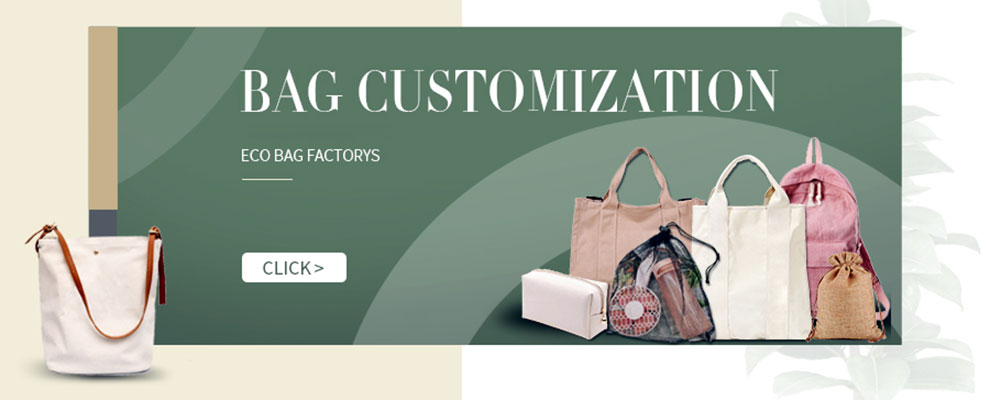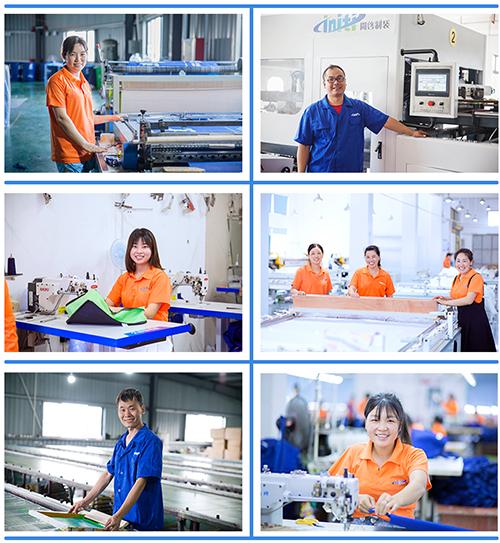Why Are Non-Woven Bags Used By More And More Industries?
What is non-woven fabric?

Non-woven fabric is a type of textile material that is engineered by bonding or interlocking fibers together rather than weaving or knitting them. Unlike traditional woven fabrics, where yarns are interlaced at right angles, non-woven fabrics are made by entangling or adhering fibers using various mechanical, chemical, or thermal processes. This results in a fabric that is strong, durable, and versatile, with a wide range of applications across industries.
Identifying non-woven fabrics can sometimes be a bit challenging, especially if you're not familiar with different types of textiles. However, there are a few methods and characteristics you can look for to help you determine if a material is a non-woven fabric:
1. Texture and Appearance: Non-woven fabrics often have a unique texture that can range from soft and fluffy to smooth and somewhat papery. They might feel different from traditional woven fabrics, which have a more structured and consistent pattern.
2. Lack of Weave Pattern: One of the most distinctive features of non-woven fabrics is the absence of a regular weave pattern. Unlike woven fabrics where you can see interlocking threads, non-woven fabrics appear more like a random arrangement of fibers.
3. Fiber Orientation: Examine the surface of the fabric closely. Non-woven fabrics might show fibers that are randomly distributed or bonded together in various directions.
4. No Fraying Edges: Unlike woven fabrics, non-woven fabrics do not have fraying edges because they are not made from woven threads that can unravel. Instead, the fibers are bonded or intertwined.
5. Tearing Behavior: Non-woven fabrics tend to tear easily in all directions because they are made by bonding or entangling fibers. Traditional woven fabrics, on the other hand, typically tear more along the grain of the threads.
6. Visual Inspection: Look for signs of stitching or thread patterns. If you can't find a clear woven pattern on the fabric's surface, it might be non-woven.
7. Thickness and Density: Non-woven fabrics can vary in thickness and density. Some might be very thin and lightweight, while others could be thicker and more substantial, depending on their intended use.
8. Purpose of the Material: Consider the context in which the material is being used. Non-woven fabrics are often used in applications where durability, absorbency, or disposability are important, such as medical products, cleaning wipes, and disposable bags.
9. Burn Test: This method requires caution and should only be used if you have experience. Burn a small snippet of the material and observe how it behaves. Non-woven fabrics often melt or shrink away from the flame, whereas woven fabrics tend to burn with more visible ash and residue.
10. Professional Opinion: If you're unsure, consult with someone experienced in textiles, such as a fabric store employee or a textile specialist. They can often identify fabrics by touch and appearance.
Remember that there are many variations and subtypes of non-woven fabrics, each with their own characteristics. If you need a definitive identification, seeking the advice of an expert or using advanced testing methods might be necessary.
Advantages of non-woven fabrics.
Non-woven fabrics offer several advantages that make them a popular choice in various industries. Here are some of the key advantages of using non-woven fabrics:
-
Cost-Effectiveness: Non-woven fabrics can often be produced at a lower cost compared to traditional woven or knitted fabrics. The manufacturing processes are generally quicker and require less labor, making them suitable for mass production of disposable and single-use products.
-
Versatility: Non-woven fabrics can be engineered to have a wide range of properties, including different levels of strength, absorbency, softness, and more. This versatility makes them suitable for diverse applications across industries.
-
Rapid Production: The production of non-woven fabrics is typically faster than traditional weaving or knitting processes. This speed is advantageous for meeting high-demand requirements, especially for products with short production cycles.
-
Customizability: Non-woven fabrics can be customized in terms of fiber type, density, thickness, and surface treatments to meet specific performance and application needs. This adaptability is especially beneficial in industries that require specialized materials.
-
Durability: Many non-woven fabrics are designed to be durable and resistant to wear and tear. This makes them suitable for applications that involve frequent use or exposure to challenging conditions.
-
Breathability: Non-woven fabrics can be engineered to be breathable, allowing air and moisture to pass through. This property is essential for products like diapers, hygiene products, and medical textiles.
-
Absorbency: Some non-woven fabrics have excellent absorbent properties, making them suitable for products like wipes, medical dressings, and filtration materials.
-
Lightweight: Non-woven fabrics are often lightweight, which can be advantageous for applications where weight is a concern, such as in aerospace or lightweight clothing.
-
Low Linting: Certain non-woven fabrics generate minimal lint or loose fibers. This property is crucial in industries where contamination control is essential, such as cleanrooms or medical environments.
-
Ease of Printing and Embossing: Non-woven fabrics can be easily printed on or embossed with designs, logos, and patterns. This makes them ideal for promotional items and branding purposes.
-
Eco-Friendly Options: Many non-woven fabrics can be made from recycled materials or biodegradable fibers, contributing to more sustainable manufacturing practices.
-
Hygiene and Cleanliness: Non-woven fabrics are often used in products that require high levels of hygiene, such as surgical drapes, wound dressings, and wipes, due to their ability to be produced in a controlled and sterile environment.
-
Resistance to Mold and Mildew: Some non-woven fabrics exhibit resistance to mold, mildew, and bacterial growth, making them suitable for applications in damp or humid environments.
-
Noise Insulation: Non-woven fabrics can provide noise insulation properties, making them useful in applications that require sound absorption, such as automotive interiors or construction materials.
Overall, the advantages of non-woven fabrics make them a versatile and attractive choice for industries seeking materials that are efficient, cost-effective, customizable, and adaptable to a wide range of applications.
Why Are Non-Woven Bags Used By More And More Industries?
Non-woven bags have gained popularity and are being used by more and more industries for several reasons:
1. Environmental Concerns: Non-woven bags are often considered more environmentally friendly than traditional plastic bags. They are reusable, which helps reduce the consumption of single-use plastics that contribute to pollution and waste.
2. Durability and Strength: Non-woven bags are designed to be durable and strong. They can carry heavier loads compared to traditional plastic bags, making them suitable for various purposes, including shopping, packaging, and transportation.
3. Customizability: These bags can be easily customized in terms of size, color, and design. This makes them an attractive option for businesses looking to promote their brand or convey a specific message.
4. Recyclability: While non-woven bags are not always as easily recyclable as some other materials like paper, they are still considered to have a lower environmental impact compared to single-use plastic bags. Some non-woven bags are made from recycled materials as well.
5. Versatility: Non-woven bags have a wide range of applications across industries. They are used in retail, agriculture, healthcare, promotional events, trade shows, and more.
6. Cost-Effectiveness: Although non-woven bags may have a slightly higher upfront cost compared to traditional plastic bags, their durability and reusability can make them more cost-effective in the long run.
7. Regulations and Bans: Many regions and countries have implemented regulations or bans on single-use plastic bags, leading industries to seek alternative options like non-woven bags.
8. Perceived Value: Non-woven bags are often perceived as higher quality and more upscale compared to thin plastic bags. This perception can positively impact a company's brand image.
9. Advertising and Marketing: Businesses can use non-woven bags as a marketing tool by printing their logos, slogans, or other promotional content on the bags. This can increase brand visibility and recognition.
10. Social Responsibility: Using non-woven bags can be seen as a commitment to social and environmental responsibility, which can resonate well with consumers who prioritize sustainable practices.
11. Fashion and Design: Non-woven bags can be designed to be aesthetically appealing, making them a fashionable accessory in addition to being functional.
12. Biodegradable Options: Some non-woven bags are made from biodegradable materials, further reducing their impact on the environment.
Overall, the growing use of non-woven bags by various industries is driven by a combination of environmental concerns, practical benefits, branding opportunities, and regulatory factors that are pushing for more sustainable and responsible choices in packaging and transportation.
Hot Tags: Non-Woven Bags China, suppliers, manufacturers, factory, wholesale, in bulk, for sale, eco friendly tote bag, branded canvas bags, rpet bag, custom garment bags, canvas drawstring bags,non woven cooler bag,pu cosmetic bag,beach bag,corduroy tote bag with zipper







